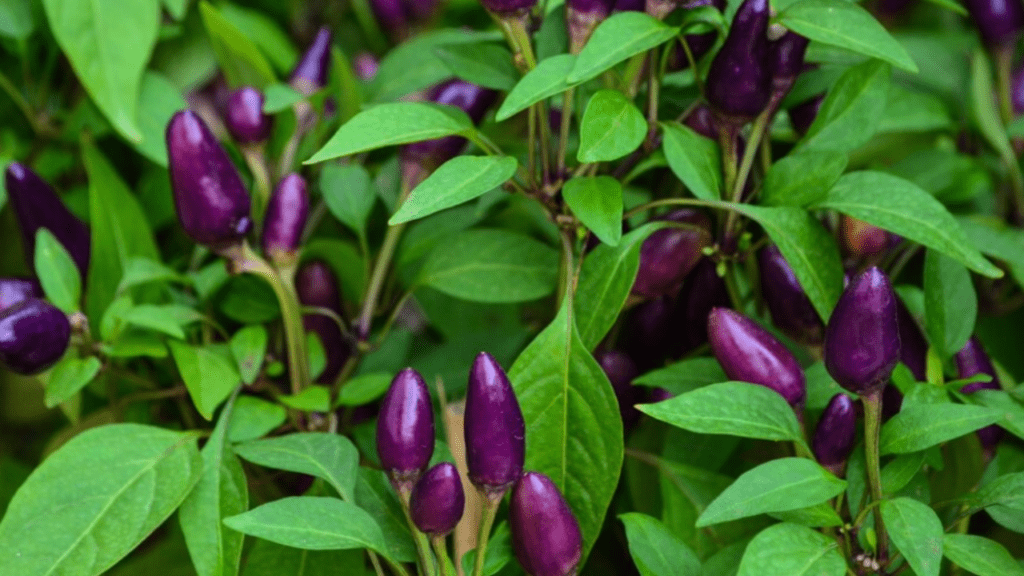
Purple Beauty Pepper Plant: Growing Guide for Vibrant Gardens
Purple beauty pepper plants are a stunning addition to any garden, with their vibrant purple fruits adding a pop of color to your outdoor space. In this comprehensive growing guide, we’ll walk you through everything you need to know to successfully grow and care for purple beauty pepper plants. From the best soil and sunlight requirements to watering tips and harvesting techniques, this guide has got you covered. Whether you’re a beginner or experienced gardener, you’ll find valuable information to help you create a thriving and beautiful garden with these unique and eye-catching pepper plants.
Purple beauty peppers are not only visually stunning, but they also add a pop of color and flavor to any dish. Growing them in your home garden is a great way to add variety and interest to your harvest. These peppers thrive in warm, sunny conditions, so make sure to plant them in a spot that receives plenty of sunlight. They also require well-draining soil, so adding organic matter like compost can help improve the soil quality. Water them regularly, especially during dry spells, and make sure to provide support for the plants as they grow to prevent them from becoming top-heavy. When the peppers are ready for harvest, simply cut them from the plant and enjoy them fresh or preserved in a variety of dishes. By growing purple beauty peppers in your home garden, you’ll not only add visual appeal but also a unique and delicious ingredient to your culinary creations.
Table of Contents
ToggleBotanical Profile of Purple Beauty Pepper Plant
A. Scientific classification
refers to the process of categorizing and naming living organisms based on their characteristics and evolutionary relationships. This system helps scientists and researchers to organize and understand the vast diversity of life on Earth. The scientific classification of plants, including the purple beauty pepper, involves assigning each organism a unique name and placing them into a hierarchical system based on their similarities and differences.
The purple beauty pepper plant belongs to the kingdom Plantae, which includes all plants. Within the kingdom Plantae, the purple beauty pepper is classified under the division Magnoliophyta, also known as flowering plants. This division includes a wide variety of plants that reproduce through flowers.
Moving further down the classification, the purple beauty pepper plant is classified under the order Solanales, which includes plants such as tomatoes, potatoes, and eggplants. Within the Solanales order, the purple beauty pepper belongs to the family Solanaceae, also known as the nightshade family. This family includes many economically important plants, such as peppers, tomatoes, and potatoes.
At a more specific level, the purple beauty pepper is classified under the genus Capsicum and the species annuum. This scientific naming system, known as binomial nomenclature, gives each organism a unique two-part name based on its genus and species.
Understanding the scientific classification of plants like the purple beauty pepper can provide valuable insights into their evolutionary history, characteristics, and relationships with other plants. It also helps gardeners and farmers to better understand how to cultivate and care for these plants in their home gardens or agricultural settings.
B. Physical description and characteristics
The purple beauty pepper plant is a member of the Solanaceae family and is classified under the genus Capsicum and the species annuum. This plant is known for its vibrant purple color and its bell-shaped fruit. It is a member of the nightshade family and is related to other economically important plants such as tomatoes, potatoes, and eggplants. Understanding the scientific classification of the purple beauty pepper plant can provide valuable insights into its evolutionary history, characteristics, and relationships with other plants. It can also help gardeners and farmers better understand how to cultivate and care for these plants in their home gardens or agricultural settings.
C. Varieties of purple beauty peppers
include Purple Beauty, Purple Bell, and Purple Beauty Sweet. These varieties vary in size, shape, and flavor, but they all share the characteristic vibrant purple color that sets them apart from other pepper varieties. Purple beauty peppers are not only visually stunning but also have a sweet, mild flavor that makes them a popular choice for cooking and snacking. Whether they are used fresh in salads, roasted, or stuffed, purple beauty peppers add a pop of color and flavor to any dish. It’s important for gardeners and farmers to be aware of the different varieties of purple beauty peppers so they can choose the best variety for their specific growing conditions and culinary needs. By understanding the various options available, they can make informed decisions on which varieties to cultivate and how to care for them.
Origins and Natural Habitat
Purple beauty peppers are believed to have originated in Central and South America, where they thrive in warm, tropical climates. They are members of the Capsicum annuum species, which also includes other popular pepper varieties such as bell peppers and chili peppers. In their natural habitat, purple beauty peppers can be found growing in a range of environments, from sunny open fields to more sheltered areas with partial shade. Understanding the origins and natural habitat of purple beauty peppers can help growers mimic these conditions in their own gardens or farms to ensure the best possible growth and yield. Additionally, it provides valuable insight into the genetic traits and adaptations that have allowed these peppers to thrive in their native environment, which can inform breeding and cultivation practices.
A. Native regions
for purple beauty peppers include regions of Central and South America, where they flourish in warm, tropical climates. They can be found growing in a variety of environments, from sunny open fields to more sheltered areas with partial shade. Understanding the native regions of these peppers can help gardeners and farmers replicate these conditions for successful cultivation. It also provides valuable insight into the genetic traits and adaptations that have allowed purple beauty peppers to thrive in their natural habitat. This knowledge can inform breeding and cultivation practices, helping to ensure the best possible growth and yield for this flavorful and colorful pepper variety.
B. Growing conditions in the wild
for purple beauty peppers can provide valuable information for growers looking to cultivate these peppers in their own gardens or farms. The native regions for purple beauty peppers include Central and South America, where they flourish in warm, tropical climates. They can be found growing in a variety of environments, from sunny open fields to more sheltered areas with partial shade. Understanding the native regions of these peppers can help gardeners and farmers replicate these conditions for successful cultivation.
Additionally, understanding the growing conditions in the wild can provide insight into the genetic traits and adaptations that have allowed purple beauty peppers to thrive in their natural habitat. This knowledge can inform breeding and cultivation practices, helping to ensure the best possible growth and yield for this flavorful and colorful pepper variety. By mimicking the natural growing conditions in the wild, growers can help the purple beauty peppers reach their full potential and produce a bountiful harvest.
C. Adaptations for cultivation in home gardens
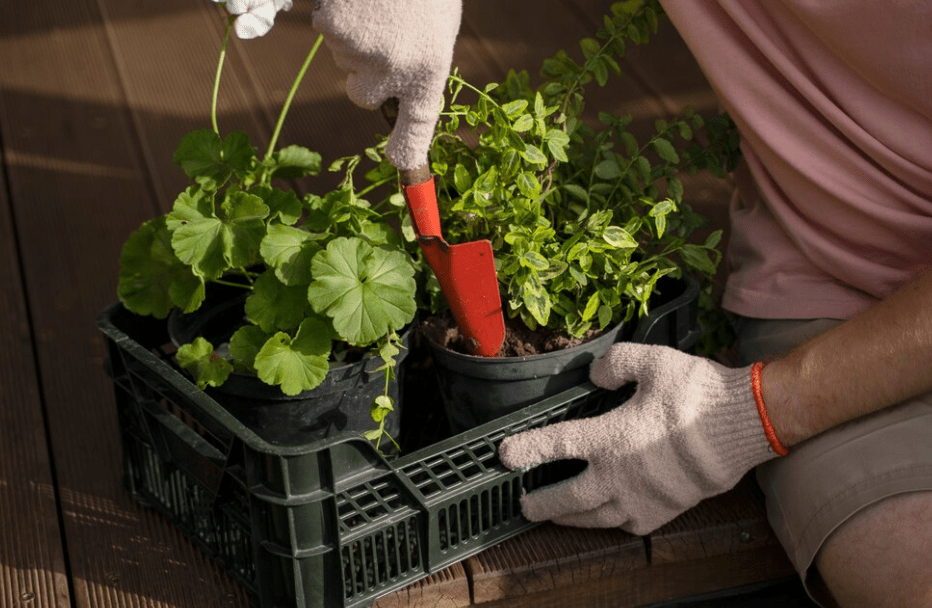
can include providing the appropriate soil, sunlight, and water conditions for purple beauty peppers. These peppers thrive in well-drained, nutrient-rich soil, so it’s important to make sure the soil is well-prepared before planting. They also require plenty of sunlight, so choosing a sunny spot in the garden for planting is crucial. Additionally, providing consistent water and ensuring proper drainage is important for the health and growth of these peppers.
In terms of care and maintenance, it’s important to monitor for pests and diseases that may affect the plants. Using organic pest control methods and keeping the garden area clean can help prevent issues with pests and diseases. It’s also important to provide support for the pepper plants, especially as they start to grow and produce fruits. Using stakes or cages can help support the plants and prevent them from bending or breaking under the weight of the peppers.
Overall, understanding the native growing conditions and making adaptations for cultivation in home gardens can help ensure the successful growth of purple beauty peppers. With proper care and attention, home gardeners can enjoy a bountiful harvest of these vibrant and flavorful peppers.
Health Benefits of Purple Beauty Peppers
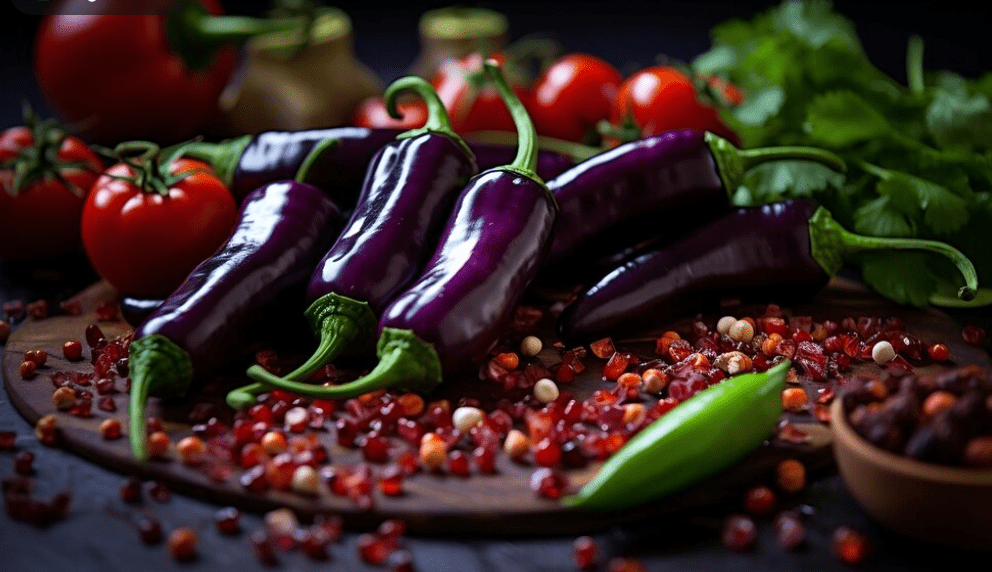
Purple Beauty Peppers are not only beautiful in color but also offer numerous health benefits. They are a rich source of antioxidants, particularly vitamin C, which helps boost the immune system and protect the body from free radical damage. These peppers also contain vitamin A, which is important for eye health and overall immune function. Additionally, they are low in calories and high in fiber, making them a great option for those looking to maintain a healthy weight and promote digestive health. Purple Beauty Peppers also contain compounds that have anti-inflammatory properties, which can help reduce the risk of chronic diseases such as heart disease and arthritis. Incorporating Purple Beauty Peppers into your diet can provide a flavorful and nutritious way to support your overall health and well-being.
How to Grow Purple Beauty Pepper Plants
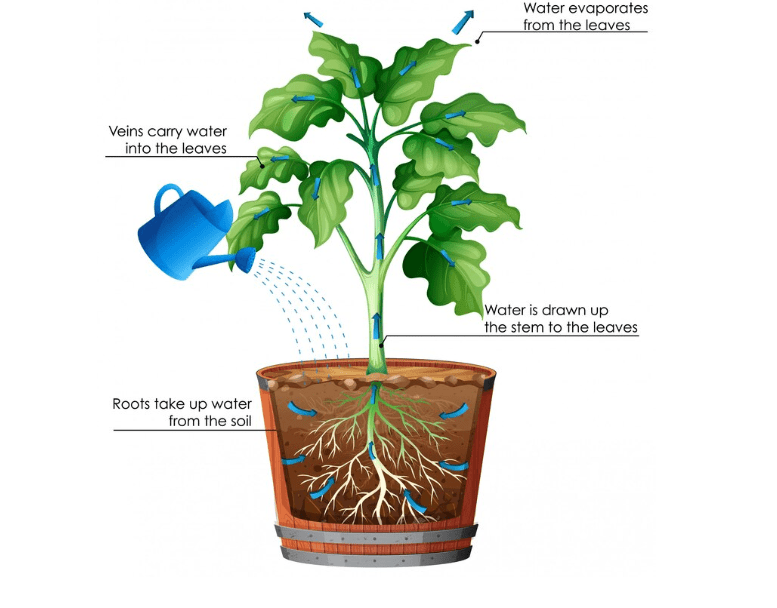
Purple Beauty Pepper plants are a beautiful and nutritious addition to any garden. To grow these vibrant peppers, it is important to understand their native growing conditions and make necessary adaptations for cultivation in home gardens. Purple Beauty Peppers thrive in warm temperatures and well-drained soil with plenty of sunlight. It is best to start the seeds indoors about 8-10 weeks before the last frost date in your area. Once the seedlings have grown to about 3-4 inches tall, they can be transplanted into the garden or larger containers.
When planting Purple Beauty Pepper plants, make sure to space them about 18-24 inches apart to allow for proper air circulation and growth. These plants require regular watering, especially during dry periods, but be cautious not to overwater as it can lead to rot and disease. Fertilize the plants with a balanced fertilizer once a month to promote healthy growth and fruit production.
It is important to monitor the plants for pests and diseases, and take appropriate measures to protect them. Additionally, providing support such as staking or cages for the plants can help keep them upright and prevent breakage as the peppers grow.
As the Purple Beauty Peppers begin to grow, it is essential to harvest them at the right time. The peppers will start off green and eventually turn to a deep purple color when fully ripe. Harvest the peppers by gently twisting them off the plant, and be sure to wear gloves to protect your hands from the capsaicin in the peppers.
Overall, with proper care and attention, home gardeners can enjoy a bountiful harvest of these vibrant and flavorful Purple Beauty Peppers, which also offer numerous health benefits.
Cultivation Techniques for Maximum Yield
Growing plants for maximum yield requires careful cultivation techniques. These plants need regular watering, especially during dry periods, but it’s important not to overwater as it can lead to rot and disease. Fertilizing the plants with a balanced fertilizer once a month can promote healthy growth and fruit production. It is also crucial to monitor the plants for pests and diseases and take appropriate measures to protect them. Providing support such as staking or cages for the plants can help keep them upright and prevent breakage as the peppers grow. As the Purple Beauty Peppers begin to grow, it is essential to harvest them at the right time. The peppers will start off green and eventually turn to a deep purple color when fully ripe. Harvest the peppers by gently twisting them off the plant, and be sure to wear gloves to protect your hands from the capsaicin in the peppers. Overall, with proper care and attention, home gardeners can enjoy a bountiful harvest of these vibrant and flavorful Purple Beauty Peppers, which also offer numerous health benefits. Remember, cultivating plants for maximum yield takes dedication and hard work, but the results are well worth it.
Culinary Uses of Purple Beauty Peppers
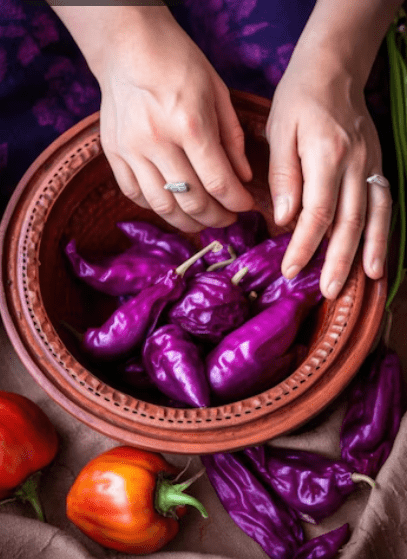
Purple Beauty Peppers are not only visually stunning, but they also have a delicious and unique flavor that can add a pop of color and taste to any dish. These peppers are versatile and can be used in a variety of culinary creations. They can be sliced and added to salads for a burst of color and flavor, or they can be stuffed with a savory filling and baked for a delicious appetizer or side dish. Purple Beauty Peppers can also be roasted and added to sandwiches or wraps for a sweet and smoky flavor. In addition, they can be pickled or preserved to be enjoyed throughout the year. These peppers are also rich in antioxidants and vitamins, making them a healthy and nutritious addition to any meal. Whether you are a home cook or a professional chef, Purple Beauty Peppers are a great ingredient to experiment with in the kitchen.
Creative Uses of Purple Beauty Pepper Plants in Gardenin
Purple Beauty Pepper plants are not only beautiful additions to a garden, but they also have a number of creative uses. These plants can be grown in containers or in the ground and can add a pop of color to any garden space. The peppers themselves can be used in a variety of culinary creations, as mentioned earlier, but they can also be used in other creative ways. For example, the peppers can be dried and ground into a flavorful powder that can be used as a seasoning for a variety of dishes. The plants can also be used as ornamental additions to flower arrangements or as a natural dye for fabrics. In addition, the peppers can be used to make homemade hot sauce or salsa, adding a unique twist to traditional recipes. Overall, the creative uses of Purple Beauty Pepper plants in gardening and in the kitchen are endless, making them a valuable and versatile addition to any garden.
Growing Challenges and Troubleshooting
Purple Beauty Pepper plants can face some challenges while growing, but there are ways to troubleshoot and overcome these obstacles. One common issue is pests such as aphids or spider mites, which can damage the plants if not addressed. Using natural pest control methods or insecticidal soap can help keep these pests at bay. Another challenge can be overwatering, which can lead to root rot. It’s important to water the plants sparingly and ensure proper drainage to prevent this issue. Additionally, extreme temperatures or lack of sunlight can also affect the growth of the plants. Providing adequate protection from harsh weather conditions and ensuring they receive enough sunlight can help them thrive. By being aware of these potential challenges and taking proactive measures to address them, you can ensure the successful growth of your Purple Beauty Pepper plants.
In conclusion, growing purple beauty pepper plants can add a vibrant and beautiful touch to your garden. By following the tips and guidelines provided in this guide, you can ensure that your plants thrive and produce bountiful harvests. Whether you’re a novice or an experienced gardener, the joy of growing and caring for these unique plants is a rewarding experience that will enhance the beauty of your garden. Happy gardening!
Frequently asked questions And Answer
Purple beauty pepper plants thrive in warm temperatures and require well-drained soil with plenty of sunlight. They also need regular watering and fertilization to ensure healthy growth.
Purple beauty peppers typically take around 70-90 days to reach maturity from the time of planting. It’s important to provide consistent care and maintenance during this time to support their growth.
Yes, purple beauty peppers can be successfully grown in containers as long as the containers are large enough to accommodate their root system and provide adequate drainage. Container-grown plants may require more frequent watering and fertilization.
Common pests that may affect purple beauty pepper plants include aphids, spider mites, and caterpillars. It’s important to regularly inspect the plants for signs of infestation and take appropriate measures to control pests. Additionally, purple beauty peppers are susceptible to diseases such as bacterial leaf spot and powdery mildew, so proper preventive measures should be taken.
Purple beauty peppers can be harvested once they reach their full size and color. It’s best to use a sharp pair of scissors or pruners to carefully cut the peppers from the plant, leaving a small portion of the stem attached. Avoid pulling or twisting the peppers, as this can damage the plant.
Yes, you can save seeds from mature purple beauty peppers for future planting. Simply remove the seeds from the peppers, allow them to dry thoroughly, and store them in a cool, dry place until you’re ready to plant them.
Yes, purple beauty peppers are not only visually stunning but also have a mild, sweet flavor that makes them great for fresh eating, cooking, and preserving. They can be used in salads, stir-fries, and as a colorful addition to various dishes.
Companion plants such as basil, oregano, and marigolds can help repel pests and enhance the growth of purple beauty pepper plants. Additionally, planting them alongside other vegetables like tomatoes and eggplants can create a harmonious and productive garden.
